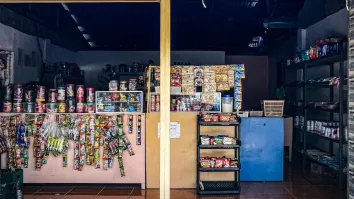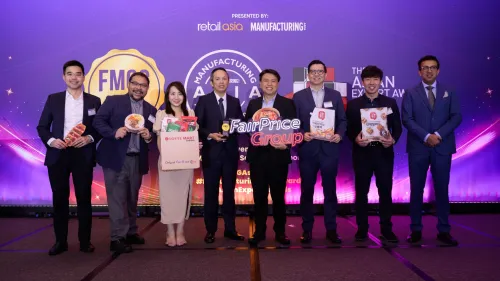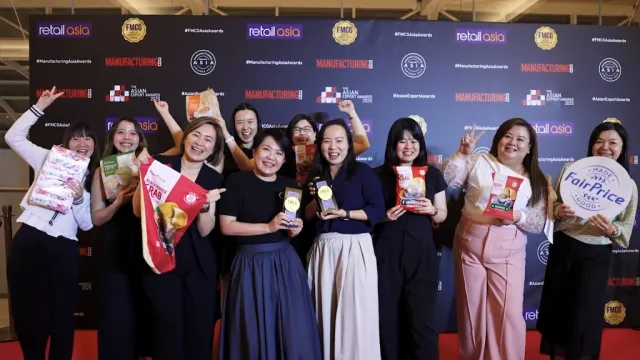Unwrapping the psychology behind festive snacking in Southeast Asia
By Hemant RupaniIs there ever a right time to snack—and how does it influence your choice of snacks? According to Mondelēz International’s latest State of Snacking report, 75% of global consumers snack during a special moment—such as milestones and festive celebrations—or at specific times of the day.
Nothing says “I love you” quite like chocolate. Whether it’s a heart-shaped box or an artisanal bar, chocolate has become the go-to gift for expressing love and appreciation. But this wasn’t always the case. In fact, chocolate had little to do with romance until a brilliant marketing idea changed everything.
In 1861, British chocolatier Richard Cadbury had a eureka moment—what if chocolate wasn’t just a treat but a symbol of love itself? He designed heart-shaped boxes that could be kept as souvenirs long after the chocolates were gone, turning a simple gift into a lasting gesture. Cadbury not only created a new tradition but also established chocolates as an enduring expression of affection. Beyond chocolate, snacks of all kinds bring people together. From nostalgic childhood treats to comfort snacks shared with loved ones, snacking has evolved into something deeply personal and emotional experience for all of us.
What does this mean for brands? It presents a unique opportunity to connect with consumers and enable meaningful moments. By tapping into the spirit of gifting and togetherness, brands can align their messaging and packaging with special moments or the season’s festivities. This allows businesses to effectively meet consumer needs whilst adding to the holiday experience.
Snacking has long been a constant in our lives, but its frequency is increasing. The rise of “snackification”, the shift from set mealtimes to more flexible snacking throughout the day, reflects our increasingly busy lifestyles. The growing popularity of “intuitive eating”, which promotes the idea of aligning meals with hunger cues instead of predefined, timed meals, has further fuelled the rise of this trend. We now see snacking as a convenient way to fuel our day, whether it’s a biscuit with morning coffee, or chocolate for a midday boost.
One might then wonder: does snacking go against the communal spirit of traditional festive meals in Southeast Asia? In fact, snacking has expanded to become increasingly prevalent in social settings, whether it is sharing festive chocolates a colleague bought back from a holiday or passing around a platter of buttery biscuits over tea with family and friends. Snacking is no longer just about satisfying hunger; it is a means of social bonding and upholding traditions. Comfort food, including chocolates and other treats, releases endorphins, reinforcing their role in moments of joy and love.
In the past, snacks were often considered a guilty pleasure, particularly during the festive season. However, consumer choices have become more multi-dimensional, going far beyond just taste and flavour. As the habit of snacking becomes more ingrained, many are becoming more mindful of what they consume and where they come from. This shift can also be attributed to the growing awareness of preventative health care, as well as the influence of health and fitness influencers.
With this changing landscape, food and beverage companies find themselves in a position to shape consumers’ snacking habits. As snacking habits evolve, the industry has a growing responsibility to promote healthier choices. Brands can take steps by reformulating products to align with consumer preferences for health-conscious options – such as offering smaller portions or sourcing ingredients sustainably. For example, brands can inspire consumers to snack more mindfully and continuously introduce healthier option by offering portion-controlled packs that cater to consumers’ changing needs.
Changing consumer preferences may seem challenging, but brands can navigate this by staying in tune with the evolving market. By analysing market trends, conducting site visits, and gathering feedback through social media, brands can gain valuable insights into what keeps consumers coming back. The silver lining lies in how unique traditions provide a playground for brands to test new flavours in limited-time snacks that resonate with the local market. The response to these new products can help assess consumer demand, potentially leading to permanent additions to their range.
In addition to flavour, packaging plays a crucial role in engaging new audiences. How often have we bought something simply because of its packaging? Repackaging core products for special occasions not only adds a seasonal twist but can also turn an everyday snack into a meaningful Valentine’s Day gift. Beyond attracting new audiences, it helps gift-givers find the perfect way to express themselves.
The future of snacking is undeniably bright, much like the joy of sharing a sweet treat on Valentine’s Day. Businesses that adapt to evolving consumer preferences will find new opportunities to shine. By understanding the deeper motivations behind holiday snacking—whether driven by nostalgia, celebration, or the desire to share a moment—businesses can create offerings that truly resonate with their audience. Those that put consumers’ needs at the heart of their strategy will build trust, loyalty, and see sustained growth in a rapidly evolving market.


















 Advertise
Advertise





